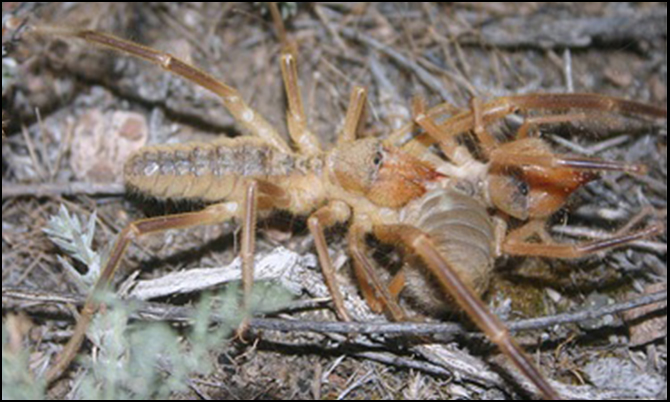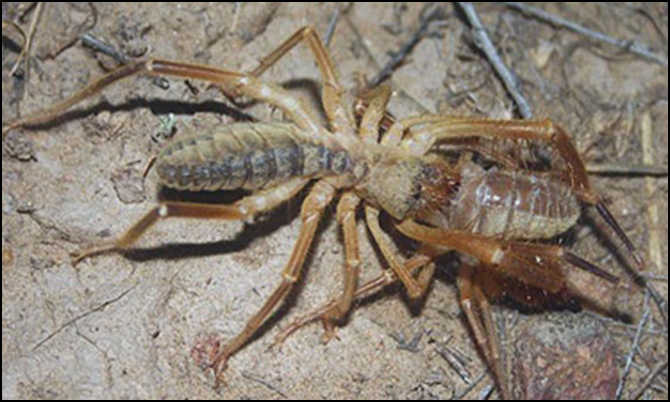Courtship and Mating
[This section contributed by Dr. Robert A. Wharton and Kristie Reddick, Department of Entomology, Texas A&M University]
Data on courtship and mating have been recorded for only a very small percentage of the world’s species, and these observations have generally been limited to members of the families Eremobatidae (Muma 1966, Punzo 1998), Solpugidae (Wharton 1987), and Galeodidae (Heymons 1902, Amitai et al. 1962, Junqua 1966, Cloudsley-Thompson 1967). More recently, Peretti (2006) has published studies on South American Ammotrechidae.
Male solifuges, at least in the Namib Desert, search for mates in much the same way that females and immatures search for food, at times traveling considerable distances in search for their heart’s desire (Wharton 1987). Junqua (1966) observed that males are capable of mating multiple times. All male solifuges, except for those in the family Eremobatidae, have flagella on the chelicerae and though there is no conclusive evidence as to their function, they are thought to play a role in the establishment of territories during the mating phase (Lamoral 1975). Wharton (1987), while not dismissing the findings of Lamoral, noted that in the species he studied, the male flagellum is inserted into the female reproductive tract during mating.
Although there is some variation in mating behavior among taxa, there are some generalities. Upon location of a prospective mate, males use their pedipalps to coerce the female into a ‘frozen state’ or torpor. This may be a chemoresponse by the female, but the same response has been elicited solely by mechanical handling (Heymons 1902, Junqua 1966). Males use their chelicerae for positioning of the female and for indirect sperm transfer. The male will bend her abdomen over her prosoma and transfer sperm on his chelicerae into her genital opening (Punzo, 1998). Sometimes, the male will ‘chew’ or massage the abdomen of the female, before moving away from the female as she slowly comes out of the torpor. In galeodids and solpugids, the spermatophore is released from the male’s genital opening while the male is massaging the female with his chelicerae. He then picks up the spermatophore with his chelicerae and forces it into the genital opening of the female. In eremobatids, the spermatophore is transferred directly from the genital opening of the male to the genital opening of the female.


Copulation of Galeodes caspius subfuscus, Malaisary Mt. foothills, Almaty area, Kazakhstan. Photos by Alexander V. Gromov)
